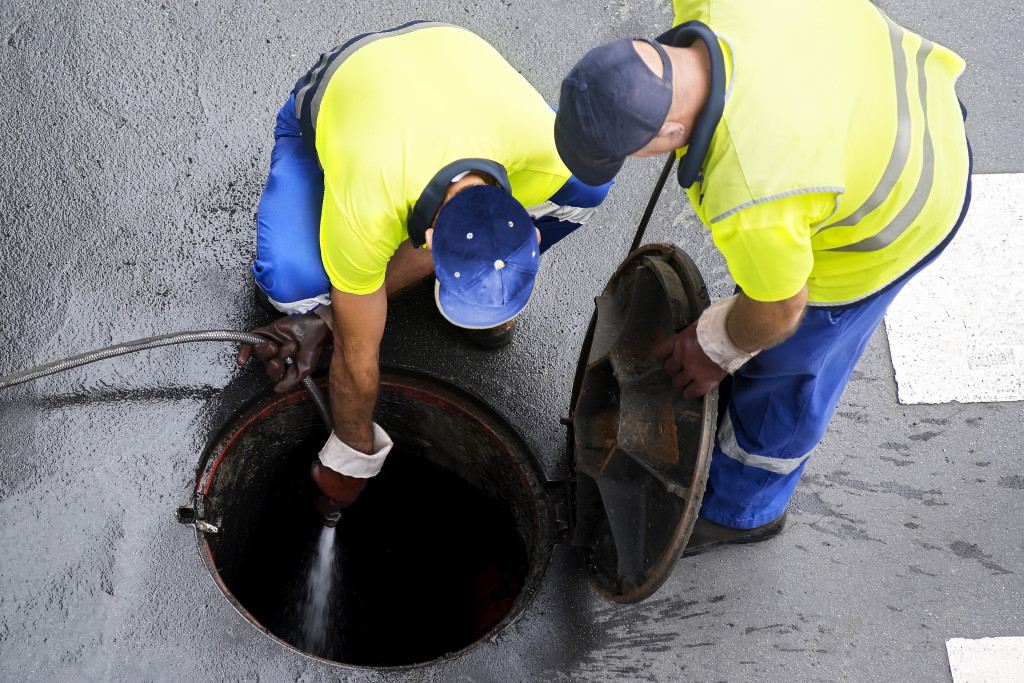A few years ago, a giant fatberg was discovered blocking the sewers underground the streets of London.
It was said to weigh almost as much as a blue and twice the size of the pitch at the Wembley Stadium. Removing it from the sewers took a really long time. Thames Water said that an eight-person crew was sent down with equipment to get rid of the monstrous blockade chunk by chunk. Despite the manpower and machinery, they could only remove 20 to 30 tons a day. It took several weeks before the mass was removed from the Victorian-era sewers. It was one of the largest fatbergs ever discovered in the United Kingdom.
There is nothing unnatural about a fatberg. It simply is a congealed mass that accumulated and formed into a solid structure from anything that is discarded through kitchen and bathroom drains. It is not an immediate threat to public health; it is mostly made of hardened fat and cooking oil alongside wet wipes, sanitary napkins, and other waste materials. Fatbergs are disgusting and a nuisance, but they can say a lot about public health.
Prodding an Underground Monster
Scientists took a chunk of another fatberg that was found underneath the streets of South Bank in central London. They analyzed it and found that the majority of it is just cooking oil. Surprisingly, the researchers also found a high concentration of illegal drugs, including cocaine and MDMA.
Throwing cooking oil into the drain has always been a major plumbing problem. Oil, when hot, is liquid but, once it cools off, it can turn into a solid substance that can accumulate and block pipes and sewers. You would need to call a professional to perform sewer line repairs that will remove blockades and return your drains in good working condition.
Scientists also previously found a few random items such as watches and false teeth after analyzing the contents of fatbergs found in England.
Fatbergs are a relatively new phenomenon. Although wet wipes have been around since the ‘60s, it was not until the 2000s when these hygiene products were marketed as an alternative to toilet paper. People who use wet wipes treat the products as conventional toilet paper. They get flushed into the toilet. But even wet wipes that are marketed as flushable are not actually good for plumbing because they do not disintegrate immediately. They will contribute to clogs and, eventually, fatbergs.
Fatbergs as Reflection of Public Health
While fatbergs should not be a cause for panic, the scientists that have previously analyzed them made some shocking discoveries.
Microbiologists carried out an analysis of the fatberg found in 2017 in the underground sewage systems in London. The scientists disclosed that, in the fatberg nicknamed “The Beast,” the presence of pathogens that commonly cause food poisoning was detected. Campylobacter, Listeria, and Escherichia coli were among the species that were found by The Beast.
The presence of bacteria risks the safety of the operatives who work in sewers. Moreover, in the event of a blockade, households affected might also be exposed if the sewers move back up to pipes and drains.
Scientists also found parasite eggs of either Alaria alata or Fasciola hepatica, both of which are zoonotic and, therefore, unlikely to come from humans.
A Breeding Ground for Superbugs
One discovery that should be taken seriously is the presence of antibiotic-resistant bacteria or superbugs.
Superbugs are a major public health threat because they do not respond well to any medication that currently exists in the market. The misuse of antimicrobials contributes to the emergence of superbugs. The lack of adequate water and sanitation contribute to their spread.
A fatberg, which exists in moist and dark environments, is the ideal place for germs, some of which are antibiotic-resistant, to survive and multiply.
The United States Centers for Disease Control and Infection revealed that more than 2.8 million Americans catch an antibiotic-resistant infection annually, and about 35,000 die of it.
Unfortunately, more and more superbugs are emerging. Scientists are not finding a treatment that can address these antibiotic-resistant pathogens quickly enough. The World Health Organization has identified over 30 antibiotics that are currently in development to fight priority pathogens. However, equal access to medication as well as the proper use of antimicrobials will slow the evolution of disease-causing germs from becoming superbugs.
Fatbergs are monstrous masses that form due to the wastes that people discard into their kitchen sinks and toilets. They cause annoyance by blocking the sewer system. Moreover, they can be a place for superbugs to thrive.

